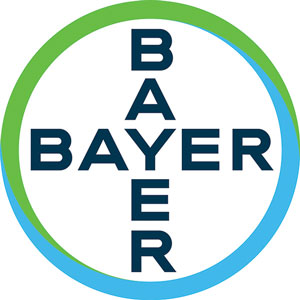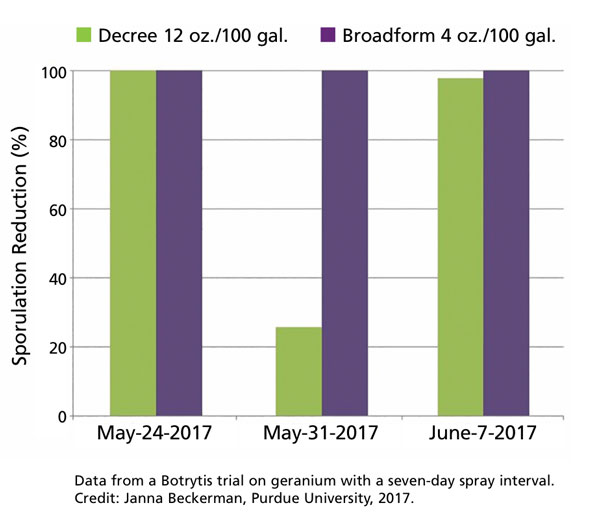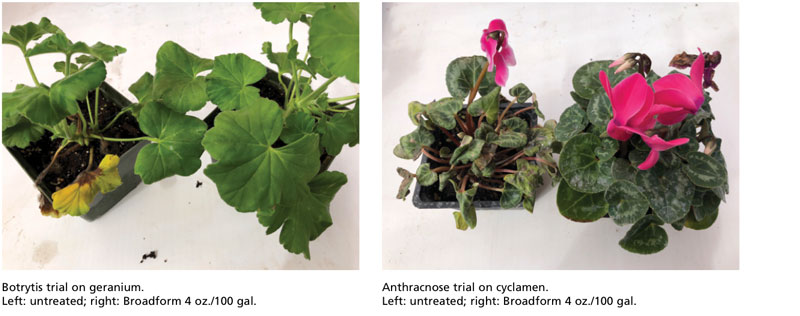10/1/2018
Beware: High Risk of Fungicide Resistance in Botrytis
Dr. Aaron Palmateer

It’s widely recognized that gray mold, or Botrytis blight, is one of the most destructive and economically important diseases affecting greenhouse-grown ornamental plants. In addition to greenhouses, Botrytis can also be prevalent on outdoor plantings, like shadehouses and open field nurseries, mostly during or following cool, damp and cloudy conditions.
There are several cultural management strategies that can help minimize the disease, such as spacing plants to allow foliage and flowers to dry between irrigation events and strict sanitation to reduce potential inoculum. However, growers remain largely dependent on fungicides for effective control of Botrytis.
The causal agent of gray mold, Botrytis cinerea, is reported as having a medium to high potential for developing fungicide resistance by the Fungicide Resistance Action Committee (FRAC). This classification is based on documented cases of resistance within commercial production—which is important because it’s not restricted to the detection of a single Botrytis isolate with reduced sensitivity. The classification actually accounts for frequency over time and space to determine if fungicide products suspect for resistance development will be affected significantly.
To be placed in this medium- to high-risk category, pathogens must also show resistance development to more than one fungicide class in commercial production. Unfortunately, there are documented cases of Botrytis cinerea having simultaneous resistance to more than three or four different fungicide classes, making it absolutely critical for growers to have a strong strategy in place to manage—and even prevent—the onset of resistance.
Studies have shown that Botrytis has significant potential to develop fungicide resistance due to its ability to undergo multiple disease cycles within a short time period. And, unfortunately, greenhouses are the perfect environment for Botrytis to grow and prosper because of the high density of susceptible plants, high relative humidity (greater than 90%) and temperatures in the low to mid 70s. Under these conditions, Botrytis produces thousands of microscopic spores and is capable of undergoing sexual recombination rapidly, thus even further contributing to the potential of fungicide resistance development.
 Resistance management
Resistance management
At the heart of a smart resistance-management program is the rotation of different types of chemistries within your fungicide program. To make this easier, FRAC developed a system that categorizes different types of products.
The FRAC codes found on fungicide labels represent the mode of action (MOA) for the active ingredient in a fungicide, making it easy for growers to rotate products with different modes of action. Additionally, most fungicide labels have a resistance management section on the label, often providing pathogen- or disease-specific details to aid growers in shaping their application strategy. This section of the label is very important, as some products must be tank-mixed when used for select pathogens, such as Botrytis.
As a rule of thumb, growers should always consider tank mixing single-site MOA fungicides with multi-site MOA fungicides when it comes to controlling Botrytis. And if there’s insufficient information on the product label, the best approach is to avoid applying more than two back-to-back applications of the same product.
Introducing new solutions
Anytime a grower can introduce a new active ingredient for disease control, they’re at an advantage. Bayer recently launched Broadform, a fungicide which contains fluopyram and trifloxystrobin, for use on ornamentals.
Fluopyram is categorized under FRAC code 7, which includes succinate dehydrogenase inhibitors (SDHIs). However, fluopyram is the only pyridinyl ethyl benzamide SDHI fungicide—making it a powerful tool in the resistance-management toolbox.
 The chemical structure of fluopyram is unique and 100 times more flexible than carboximide SDHI fungicides, enabling the molecule to better bind to fungi on a cellular level. Because of this ability, fluopyram can still remain effective in instances where structural mutations have resulted in resistance to carboximide SDHI fungicides, making Broadform an excellent choice for resistance management. And as an added benefit, Broadform contains two active ingredients, combining fluopyram with trifloxystrobin, to both increase the spectrum of disease control and target two different sites of fungal cellular
The chemical structure of fluopyram is unique and 100 times more flexible than carboximide SDHI fungicides, enabling the molecule to better bind to fungi on a cellular level. Because of this ability, fluopyram can still remain effective in instances where structural mutations have resulted in resistance to carboximide SDHI fungicides, making Broadform an excellent choice for resistance management. And as an added benefit, Broadform contains two active ingredients, combining fluopyram with trifloxystrobin, to both increase the spectrum of disease control and target two different sites of fungal cellular
respiration.
Beyond Botrytis, Broadform has also performed very well in trials against anthracnose, powdery mildew, black spot of rose, Rhizoctonia stem rot and other leaf spot diseases caused by species of Septoria and Alternaria. With this spectrum of activity and the introduction of a new active ingredient to the industry with fluopyram, Broadform will be an excellent new disease management option for ornamental producers.
Clearly, it’s critical for growers to have a strong program in place to manage—and even prevent—the onset of fungicide resistance. Luckily, there are innovations surfacing that can support a diversified strategy. GT
For more information about Broadform, visit www.EnvironmentalScience.Bayer.US/Broadform.
Dr. Aaron Palmateer is Green Solutions Team/Senior Technical Services Representative for Bayer.